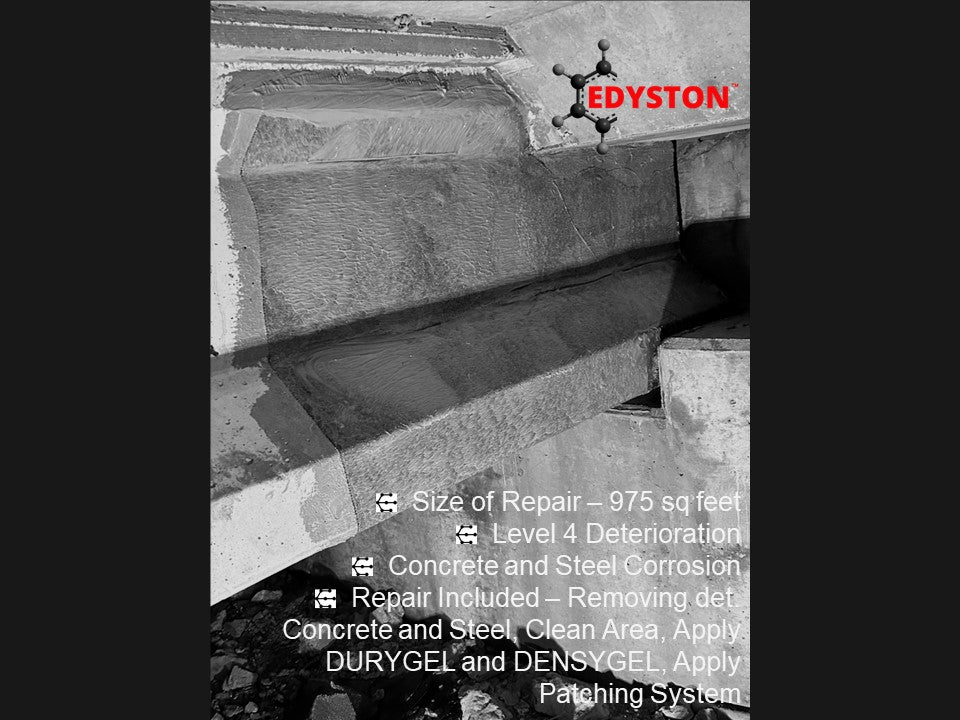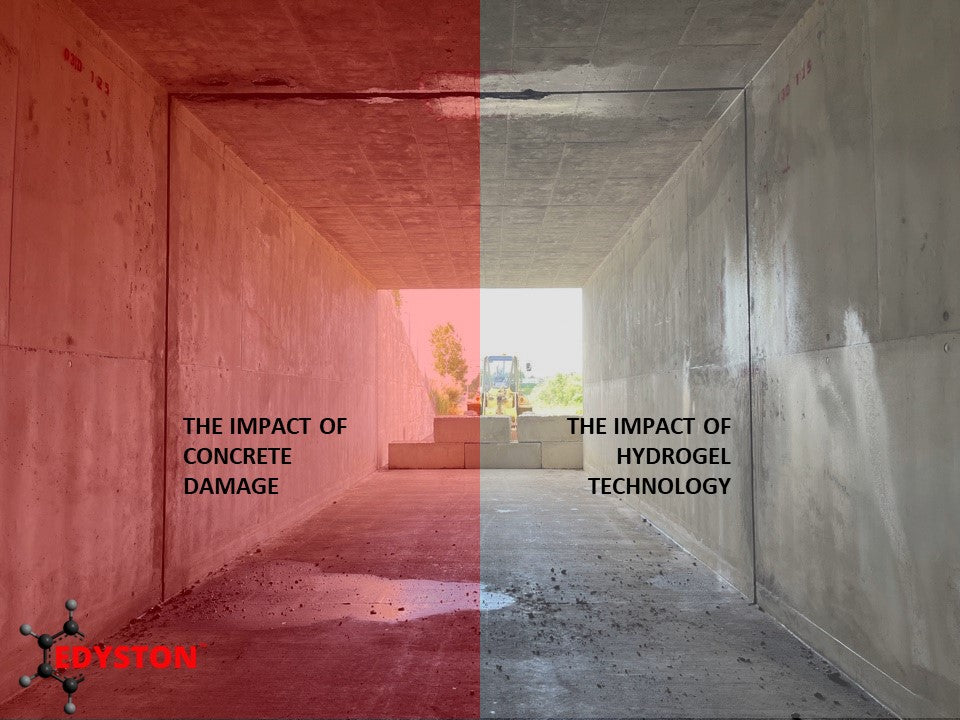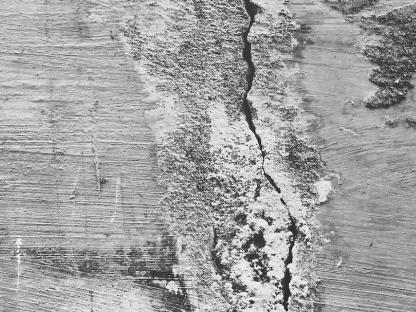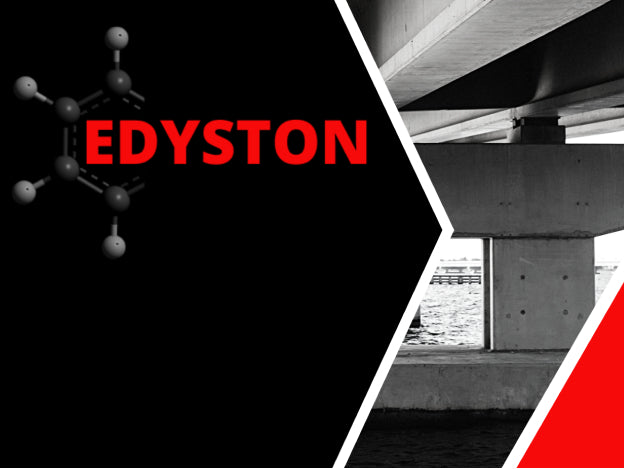Case Studies
Howell Residence Case Study
Background
EDYSTON was utilized by a New Jersey Contractor to rejuvenate the CMU wall of a garage in Howell, NJ. The project will be a mutli-year study on the impact of the EDYSTON technologies in controlling the wicking action of concrete cracks on the deteriorated CMU wall. The CMU wall was placed in 2020 as the infrastructure for a mechanic shop. The cracks and deterioration along the wall are visible in Figure 1 and Figure 2.


EDYSTON is a dispersion of nano sized particles which consumes excess water and alkalis that reside in concrete pores and cracks and produces a denser concrete. Concrete is a hardened sponge with channels that allows water to leach through the body of the concrete to the concrete surface while also allowing deleterious chemicals to flow into the concrete. EDYSTON is a spray on technology which creates a more homogenous and stable concrete structure that is less prone to excessive degradation from chemical and physical attack. When EDYSTON is added, a reaction occurs that chemically binds the concrete pore water solution. In doing so, this converts the pore solution into a bridging technology that spans the crack and pores that would cause further concrete deterioration. Furthermore, this technology in combination with the pore water solution develops into calcium silicate hydrate (“C-S-H”). C-S-H is the backbone of concrete strength and therefore, concrete enhanced with EDYSTON is denser and less permeable. This results in the decrease of water and alkalis to the surface as well as the decrease in harmful chemicals that are able to leach from the surface into the body of the concrete.
EDYSTON Application
The EDYSTON team led by Jon Belkowitz, began prepping the jobsite on Wednesday, August 30TH. The concrete sections were pressure washed to clean off impurities and create a saturated surface-dry (SSD) conditions. The concrete was tested for water absorption before the EDYSTON hydrogel was applied. Each section to be tested was permanently marked and photographed to create a profile of the area for extended evaluation (2-years). The markings for each are defined below, Figure 3 and 4:

Figure 3 – The cement masonry unit knee wall for the Howell, NJ residence.

Figure 4 – Rudimentary diagram of the interior structure. The walls numbered 1 and 2 were treated with EDYSTON.

Figure 5 – Areas Treated and Tested: White, No Treatment; Orange, DENSYGEL at 125 sq ft per gallon; ; Blue, DURYGEL at 250 sq ft per gallon and then DENSYGEL at 250 sq ft per gallon.
The hydrogel technology was placed in 2- to 4-foot sections of the concrete utilizing the method described:
- SSD the Surface of Cleaned Concrete
- Spray with clean water and allow to get to SSD before applying EDYSTON.
- Apply EDYSTON when concrete reaches SSD
- Applications until SSD is reached – use water droplet test method – ASTM E 3191.
- Less than 1 min to absorb water, Not SSD
- Greater than 1 min to absorb water, SSD
- Apply EDYSTON no more than 10-min after the SSD has been reached
- Do not allow surface to dry between coats
- Allow 5- to 10-min between coats
- Apply coats of 500-1000 sq ft per gallon
- Use sprayers: 100 to 300 psi.
All sections were power-washed and brough to a saturated surface dry condition - 10 square feet were untreated, 75 square feet were treated with DENSYGEL and 75 square feet were treated with a combination of ENVRYOGEL and DENSYGEL. The sections will be retested and monitored for profile change at 1-, 180-, 365-days; 1.5-, 2-, 2.5-, and 3-years for water absorption (RILEM-Water Test), water sorptivity and ASTM C 1585 (when coring is permitted).
Results
After three and a half hours, RILEM testing was performed on the treated and untreated areas. The area treated with DENSYGEL lost 0.5 milliliter of distilled water and the untreated area lost 3.5 milliliters of distilled water, Figure 6.

Figure 6 – Water Loss for Untreated vs with DENSYGEL and the ENVYROGEL and DENSYGEL combination.
These initial results indicate that the DENSYGEL hydrogel controls the wicking action of water and can be used to slow future deterioration of cracks within the concrete of the CMUs in the cracked sections as well as the sections that had been treated without cracks. The combined data from the field trials will be used to create a cost- and service-life analysis to present value-added performance of the hydrogel technology.






